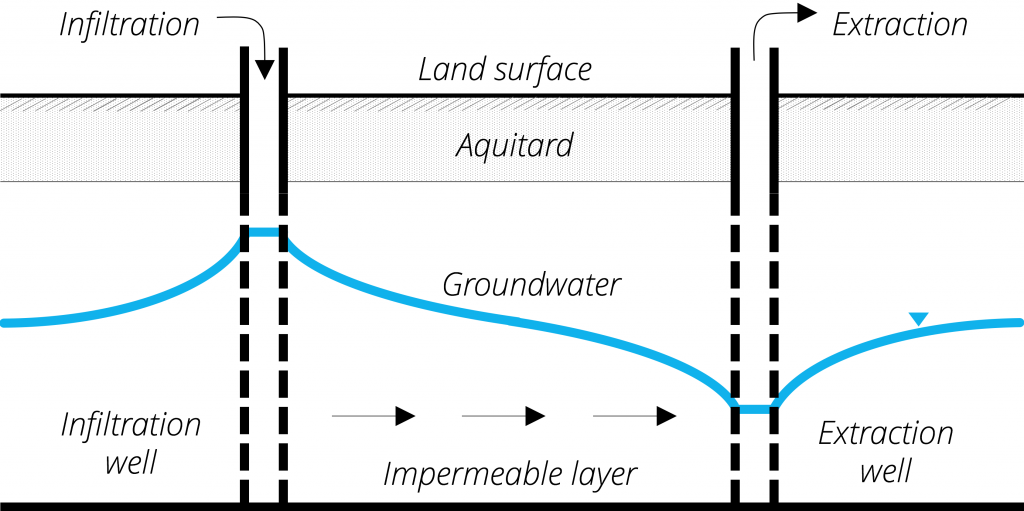
For Aquifer Storage, Transfer, and Recovery (ASTR) water is injected into the aquifer through one well and is extracted by another well located some distance away. The underground passage facilitates physical and chemical processes that improve the quality of the injected water. This type of MAR is mainly used where thick and low permeability strata is present above the targeted aquifer. Well injection techniques demand a high water quality as the recharged water is injected directly into the aquifer.
| Typical system capacity scale | Village – Town (≈104 m3/year – higher than 106 m3/year). |
| Geology | Confined or unconfined aquifers composed by unconsolidated rocks. |
| Topography | Not relevant for this kind of technology. |
| Soils | Not relevant for this kind of technology. |
| Water source | River water, lake water, treated wastewater, groundwater, etc. High water quality is required to prevent clogging and pollution of the aquifer. |
| Pre-treatment | Water must be treated to prevent clogging and to comply with local groundwater regulations |
| MAR main objective | Treatment of source water, and recovery of groundwater levels. |
| Relative cost | Medium-High. |
Advantages and disadvantages of the system (adapted from IGRAC, 2007):
Advantages
- Infiltration of large quantities of water at relatively low cost.
- Groundwater recharge is not determined by surface characteristics.
- Underground passage as additional treatment step.
Limitations
- Complex design, construction, operation, and maintenance.
- Intensive monitoring of system performance is required.
- High water quality demands of source water.
- High potential for well clogging.
Case studies
References
- IGRAC. (2007). Artificial Recharge of Groundwater in the World.
- DEMEAU. (2014). Characterization of European managed aquifer recharge (MAR) sites – Analysis.
